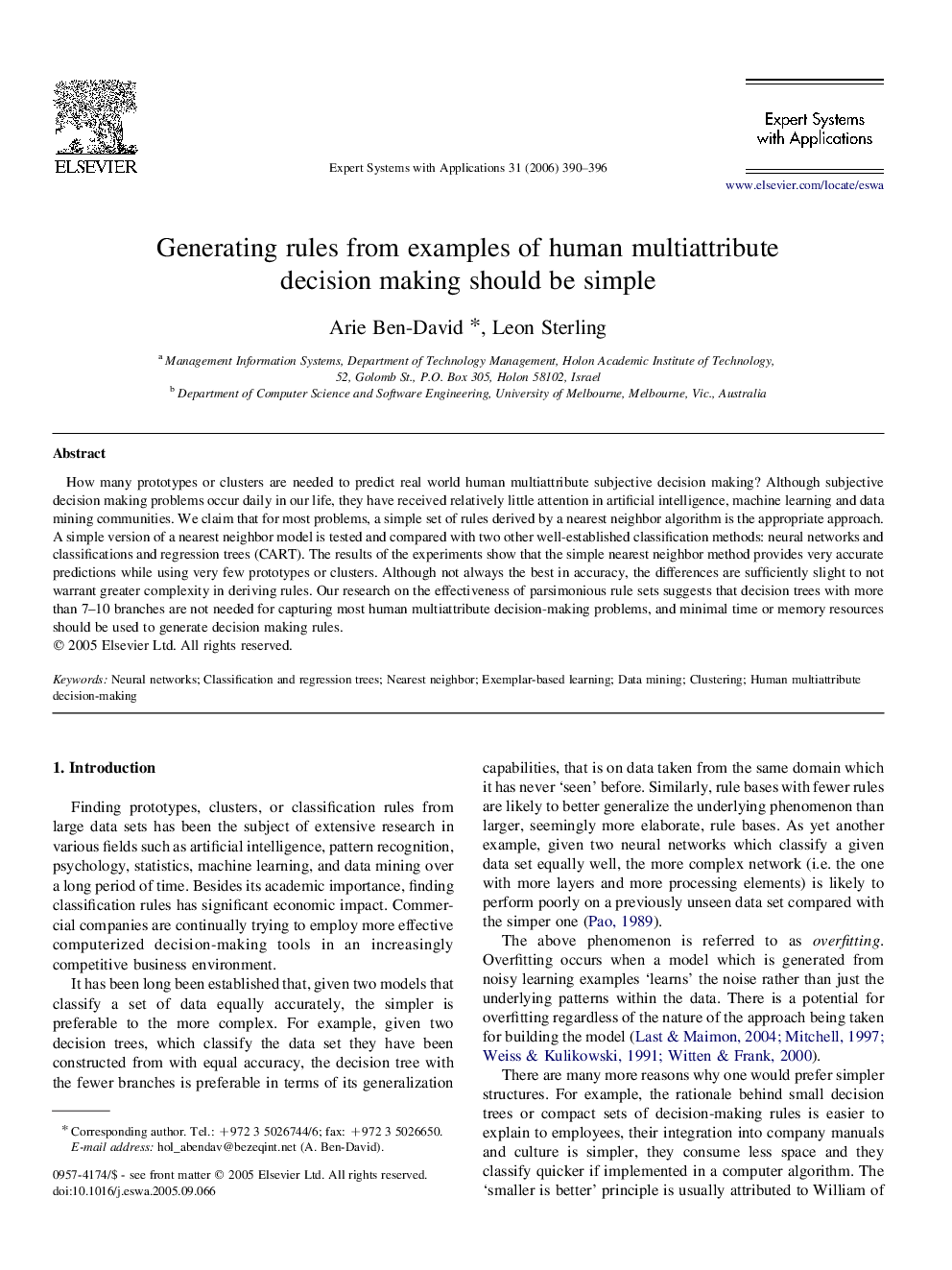| Article ID | Journal | Published Year | Pages | File Type |
|---|---|---|---|---|
| 387746 | Expert Systems with Applications | 2006 | 7 Pages |
How many prototypes or clusters are needed to predict real world human multiattribute subjective decision making? Although subjective decision making problems occur daily in our life, they have received relatively little attention in artificial intelligence, machine learning and data mining communities. We claim that for most problems, a simple set of rules derived by a nearest neighbor algorithm is the appropriate approach. A simple version of a nearest neighbor model is tested and compared with two other well-established classification methods: neural networks and classifications and regression trees (CART). The results of the experiments show that the simple nearest neighbor method provides very accurate predictions while using very few prototypes or clusters. Although not always the best in accuracy, the differences are sufficiently slight to not warrant greater complexity in deriving rules. Our research on the effectiveness of parsimonious rule sets suggests that decision trees with more than 7–10 branches are not needed for capturing most human multiattribute decision-making problems, and minimal time or memory resources should be used to generate decision making rules.
